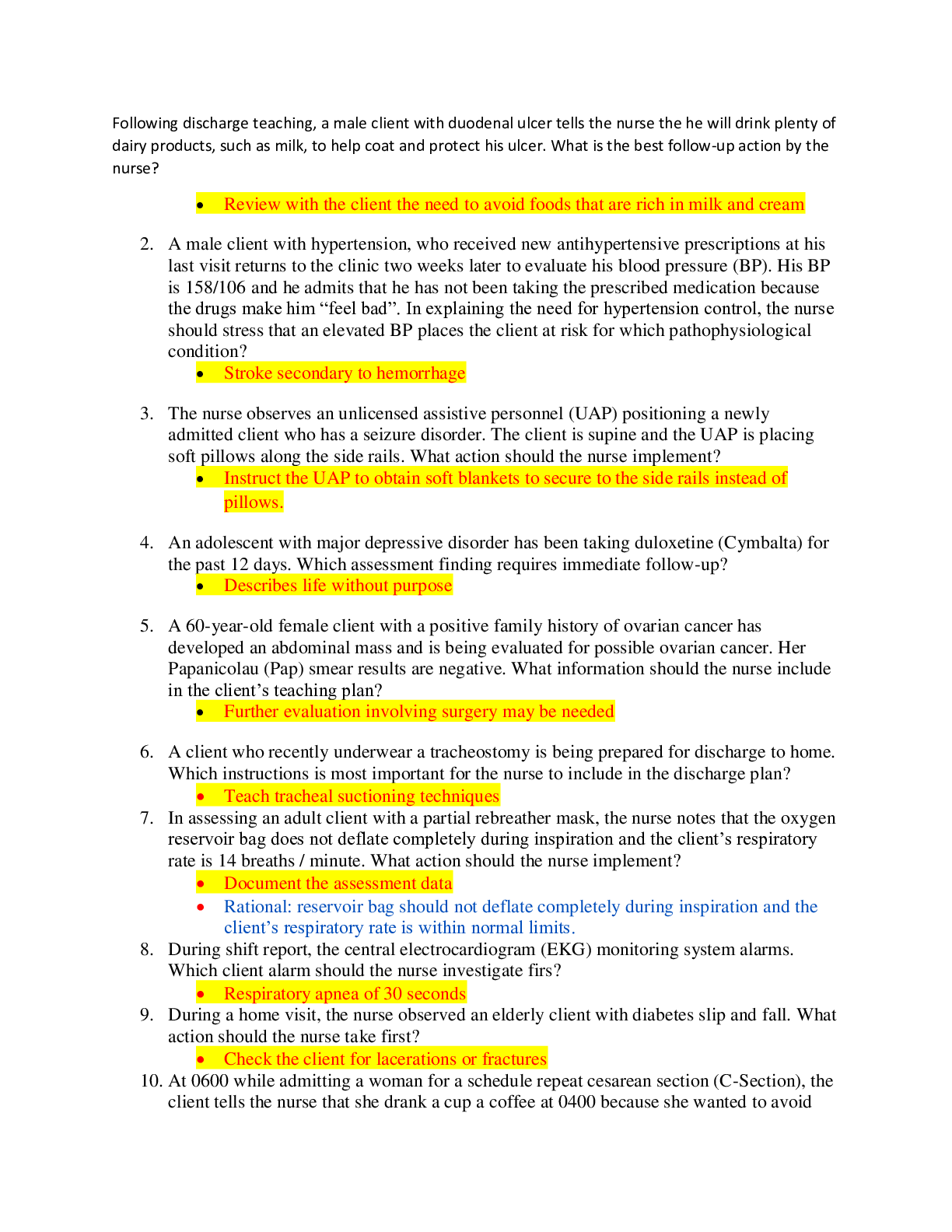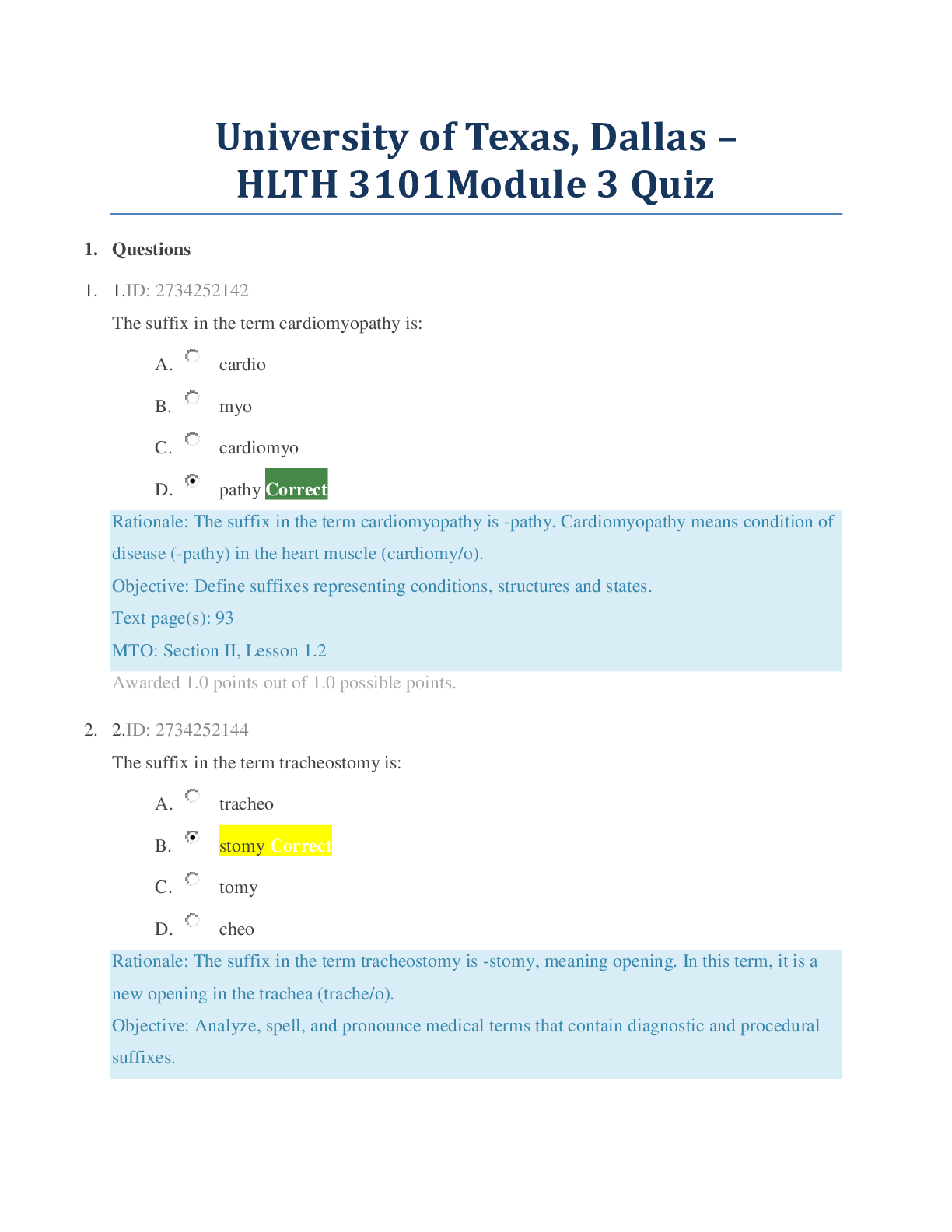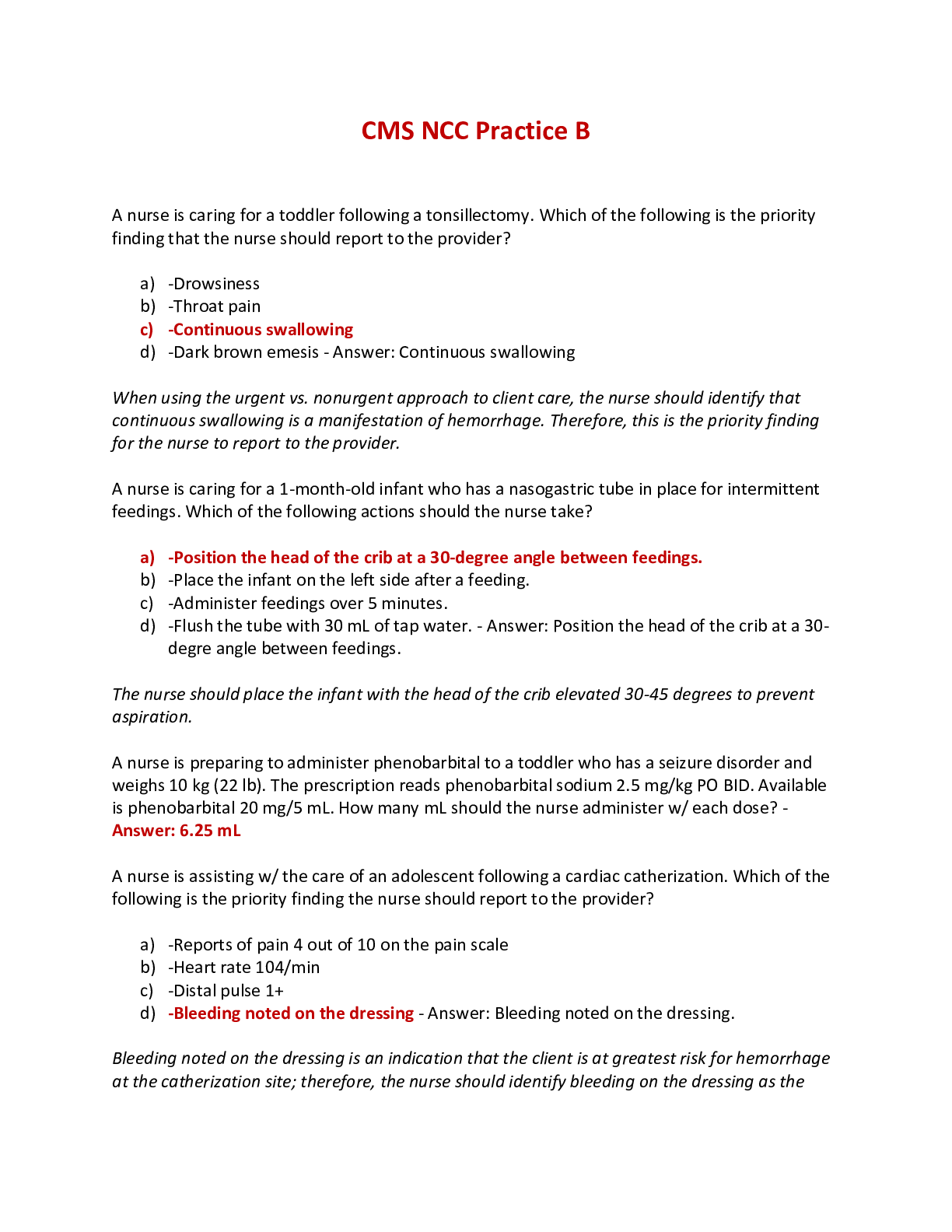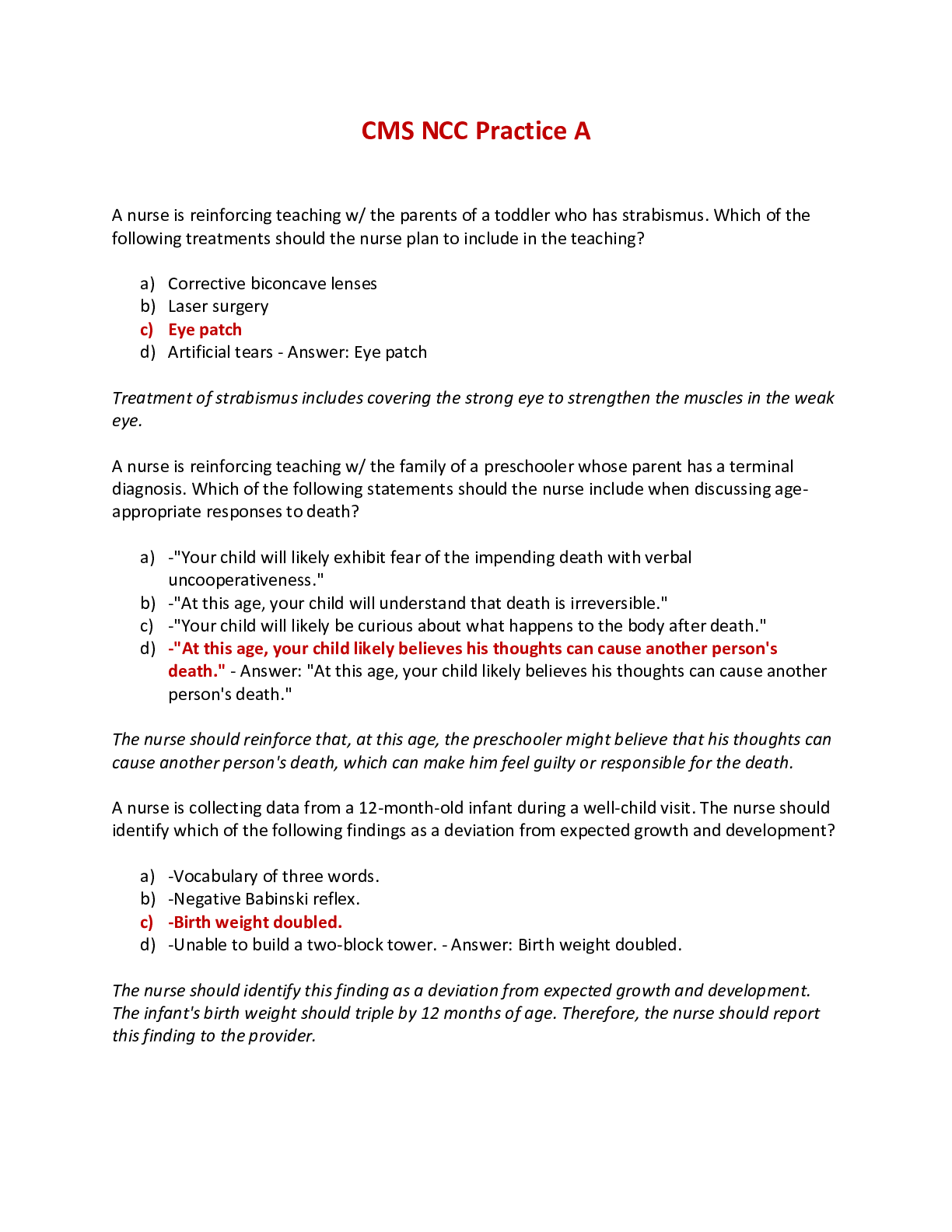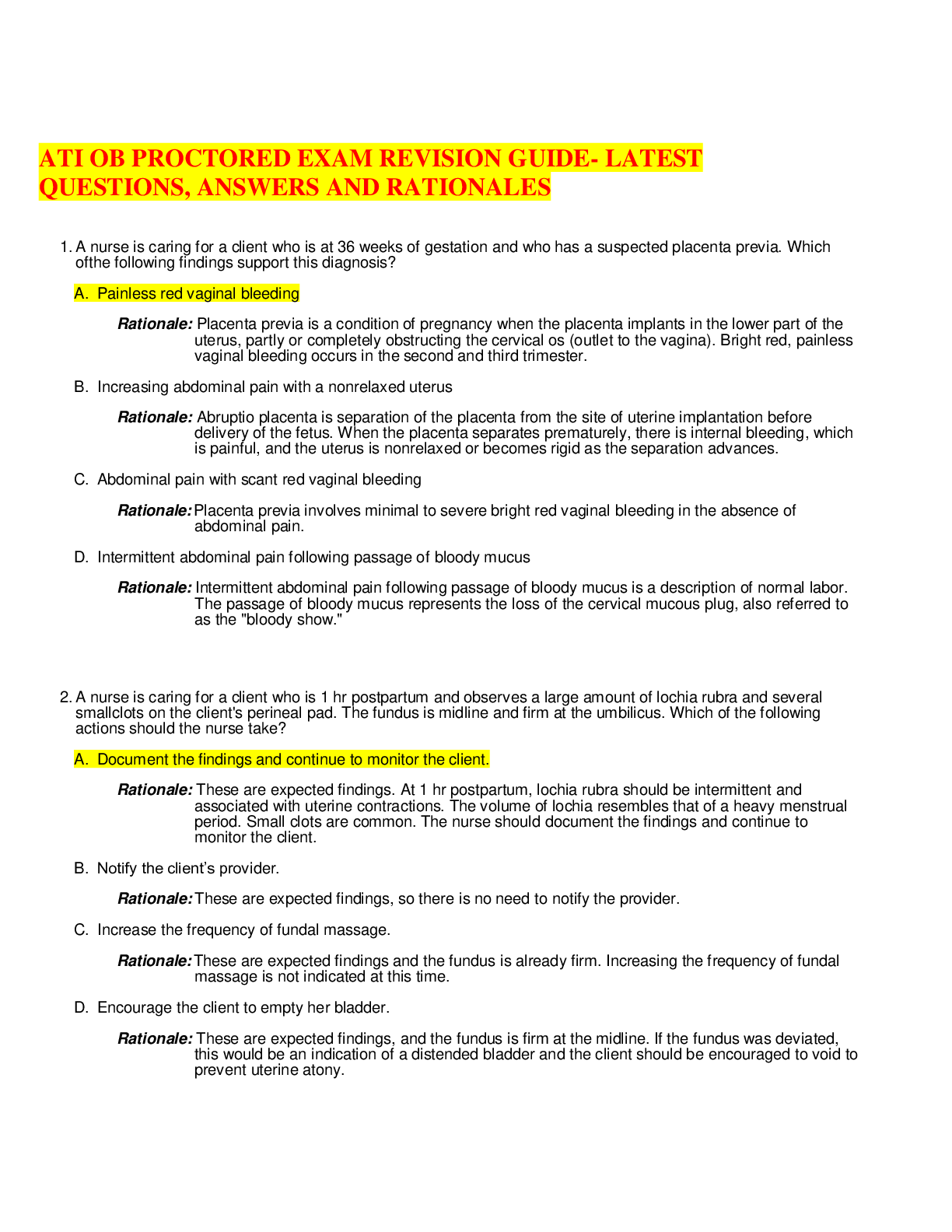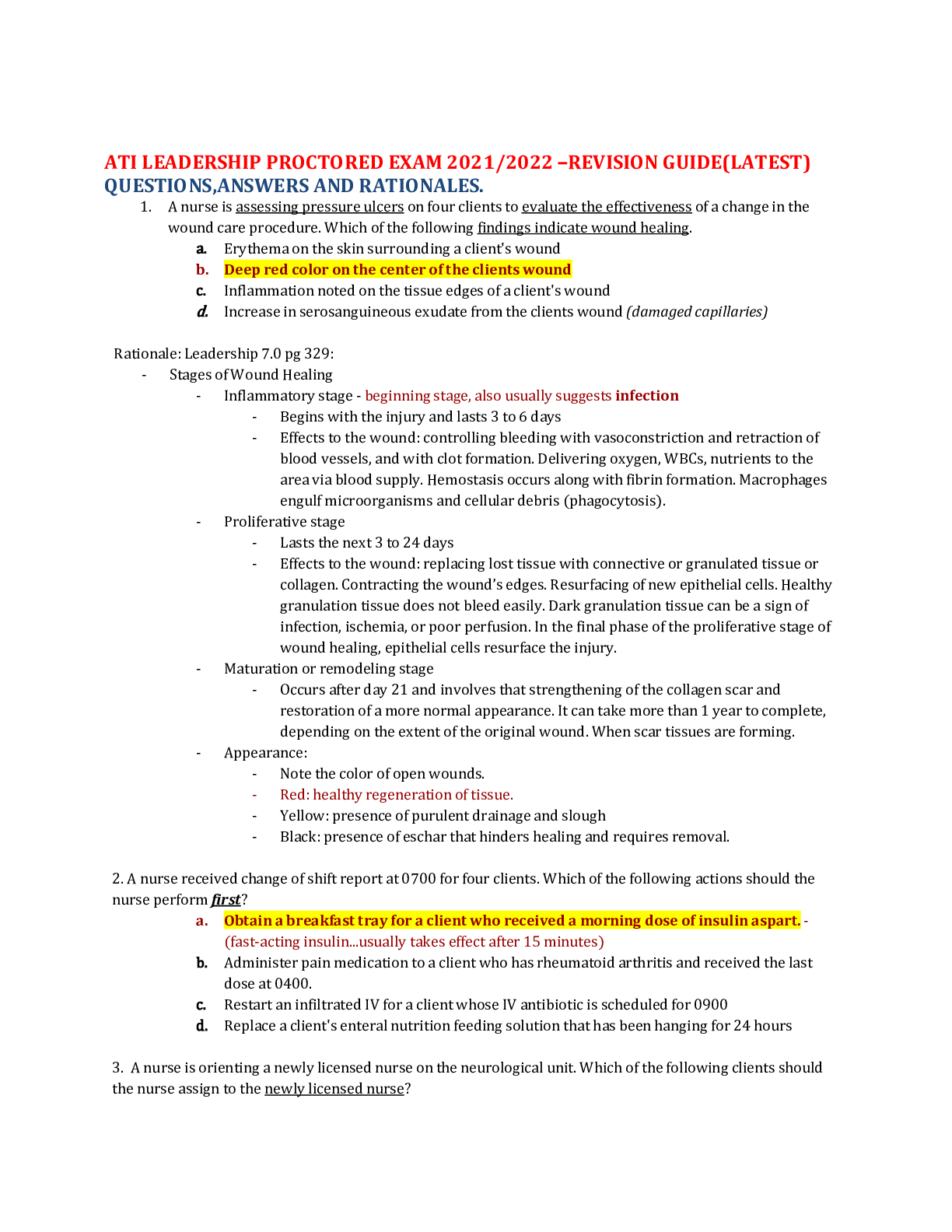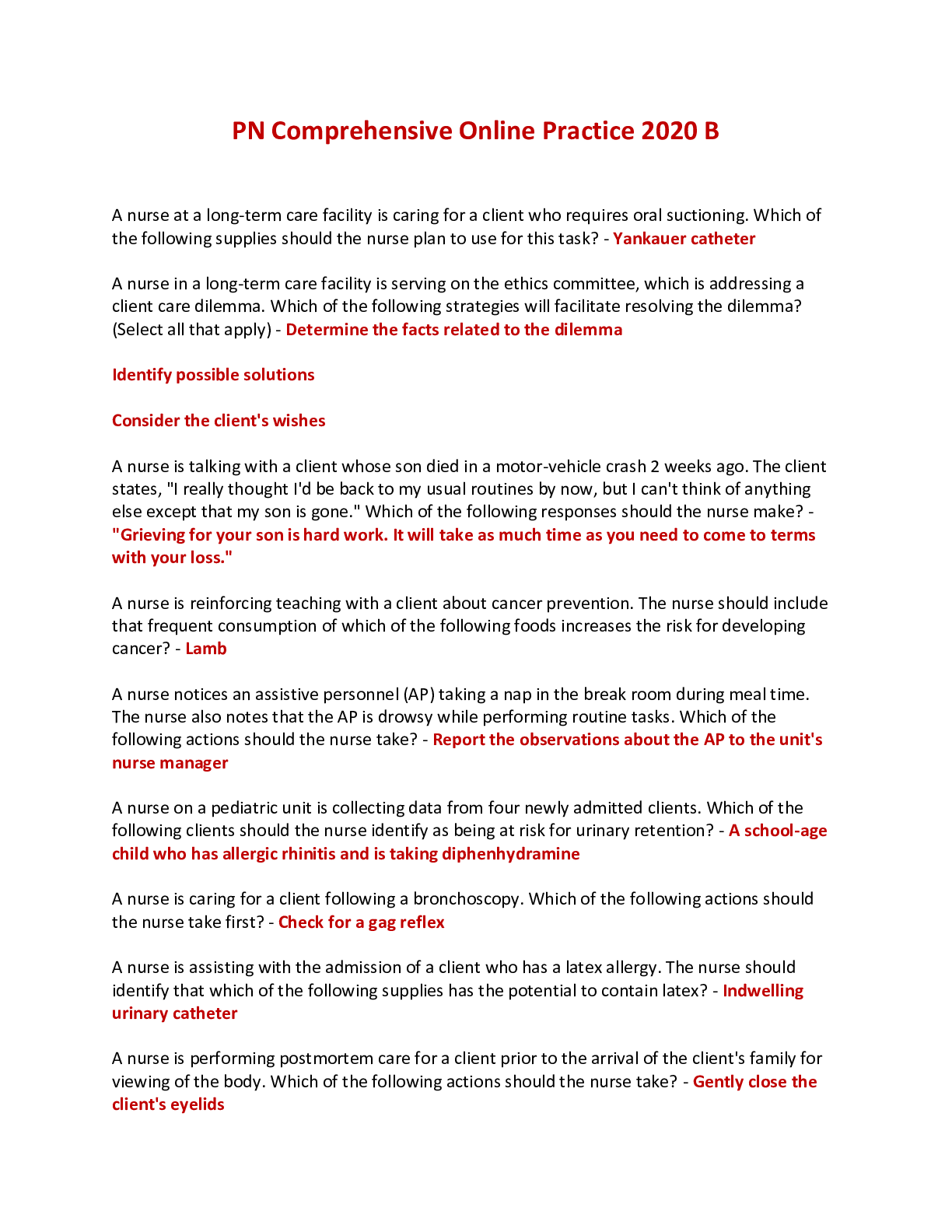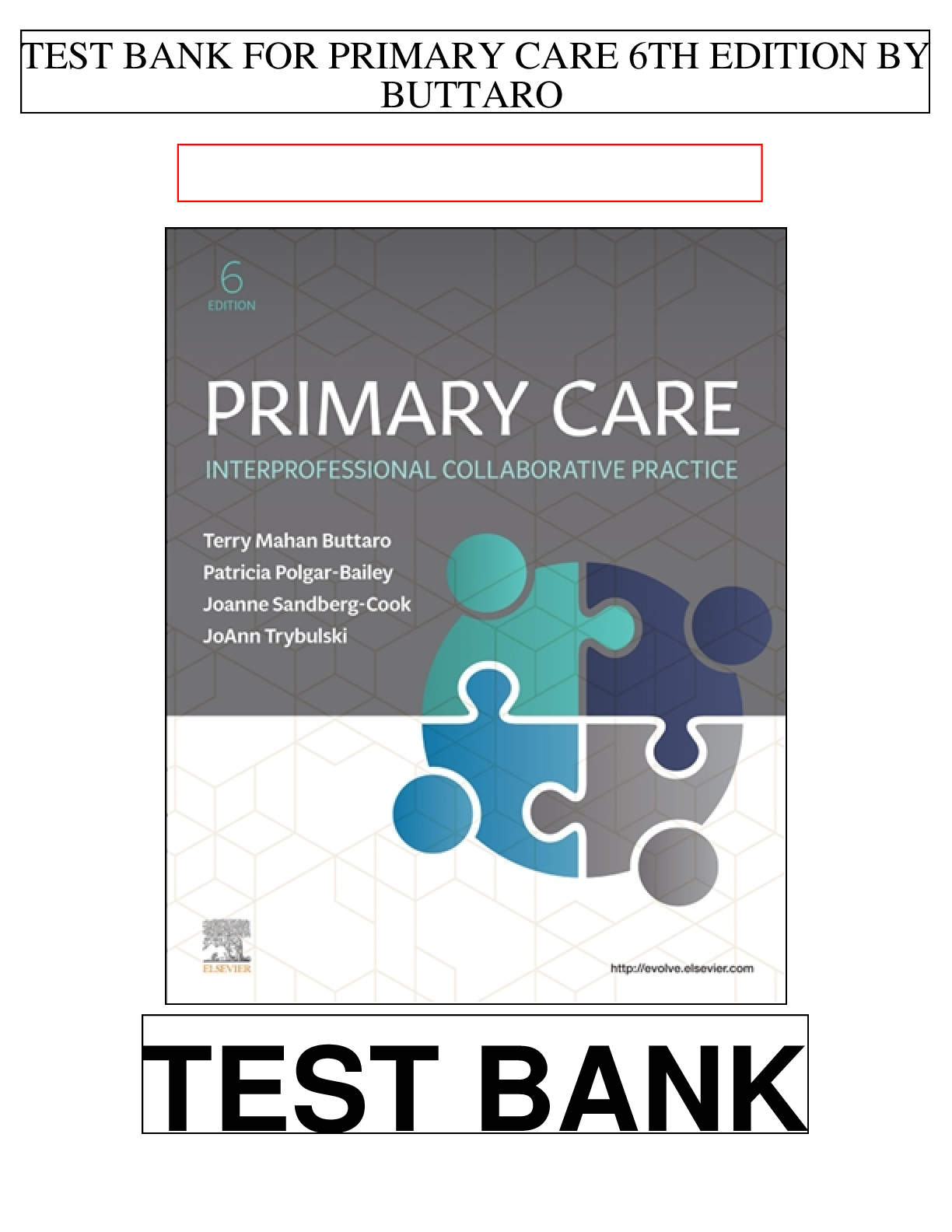Biology > EXAM > Neuroscience International 6th Edition by Purves_TEST BANK | Answers and Rationale (34 Chapters)_202 (All)
Neuroscience International 6th Edition by Purves_TEST BANK | Answers and Rationale (34 Chapters)_2022/2023
Document Content and Description Below
Neuroscience, Sixth Edition Purves • Augustine • Fitzpatrick • Hall • LaMantia • Mooney • Platt • White Chapter 1: Studying the Nervous System Multiple Choice 1. Which part of DNA is... transcribed into messenger RNA? a. Exon b. Intron c. Promoter d. Non-coding DNA e. Regulatory DNA Answer: a Textbook Reference: Genetics and Genomics Bloom’s Level: 2. Understanding 2. Genomics is the analysis of a. coding DNA sequences for a species. b. regulatory DNA sequences for an individual organism and a species. c. coding and regulatory DNA sequences for a species. d. coding and regulatory DNA sequences for an individual organism. e. coding and regulatory DNA of an individual organism or a species. Answer: e Textbook Reference: Genetics and Genomics Bloom’s Level: 1. Remembering 3. Which of Camillo Golgi’s contributions enabled Santiago Ramón y Cajal to make observations that suggested that nerve cells are discrete entities? a. Articulation of the neuron doctrine b. Identifying the organelle later called the Golgi apparatus c. Development of a staining method based on impregnation with silver salts d. Improving the understanding of the pathophysiology of malaria e. Articulation of the reticular theory of nerve cell communication Answer: c Textbook Reference: Cellular Components of the Nervous System Bloom’s Level: 2. Understanding 4. The major proponent(s) of the neuron doctrine was(were) a. Camillo Golgi. b. Santiago Ramón y Cajal. c. Charles Sherrington. d. Santiago Ramón y Cajal and Charles Sherrington.e. Camillo Golgi and Santiago Ramón y Cajal. Answer: d Textbook Reference: Cellular Components of the Nervous System Bloom’s Level: 1. Remembering 5. Which function is a characteristic primarily of neurons only, and not glia? a. Transmits action potentials b. Supports electrical signals c. Repairs the nervous system d. Prevents regeneration of the nervous system e. Produces myelin Answer: a Textbook Reference: Cellular Components of the Nervous System Bloom’s Level: 1. Remembering 6. In which part of a neuron would most of the endoplasmic reticulum be concentrated? a. Postsynaptic terminal b. Presynaptic terminal c. Axon d. Cell body e. Dendrite Answer: d Textbook Reference: Cellular Components of the Nervous System Bloom’s Level: 1. Remembering 7. Which intracellular component facilitates the processes of endocytosis and exocytosis underlying synaptic communication? a. Mitochondria b. Endoplasmic reticulum c. Cytoskeleton d. Golgi apparatus e. Nucleus Answer: c Textbook Reference: Cellular Components of the Nervous System Bloom’s Level: 2. Understanding 8. Most neurons have a. one axon hillock (initial segment). b. multiple axon hillocks (initial segments). c. one dendrite. d. one axon hillock (initial segment) and one dendrite. e. multiple axon hillocks (initial segments) and one dendrite. Answer: a Textbook Reference: Neurons Bloom’s Level: 1. Remembering9. Which statement best describes the function of a neuron with multiple, highly branched dendrites and one axon? a. It passes information directly to multiple neurons. b. It cannot integrate information from multiple neurons. c. It receives information from only one other neuron. d. It integrates information from many neurons. e. The information it receives will not be relayed. Answer: d Textbook Reference: Neurons Bloom’s Level: 3. Applying 10. Which statement best describes most neurons? a. They receive information via axons. b. They transmit information to other cells via dendrites. c. They are polarized. d. They conduct signals bidirectionally. e. They transmit electrical signals via cytoplasmic continuity. Answer: c Textbook Reference: Neurons Bloom’s Level: 3. Applying 11. Compared with projection neurons, axons of local circuit neurons (interneurons) a. are longer. b. are shorter. c. have more synapses. d. have more branches. e. reach more postsynaptic neurons. Answer: b Textbook Reference: Neurons Bloom’s Level: 2. Understanding 12. An action potential is a(n) _______ change in the electrical potential across the nerve cell membrane. a. single b. all-or-nothing c. permanent d. random e. unidirectional Answer: b Textbook Reference: Neurons Bloom’s Level: 1. Remembering - [Show More]
Last updated: 1 year ago
Preview 1 out of 542 pages

Reviews( 0 )
Document information
Connected school, study & course
About the document
Uploaded On
Feb 20, 2022
Number of pages
542
Written in
Additional information
This document has been written for:
Uploaded
Feb 20, 2022
Downloads
0
Views
113













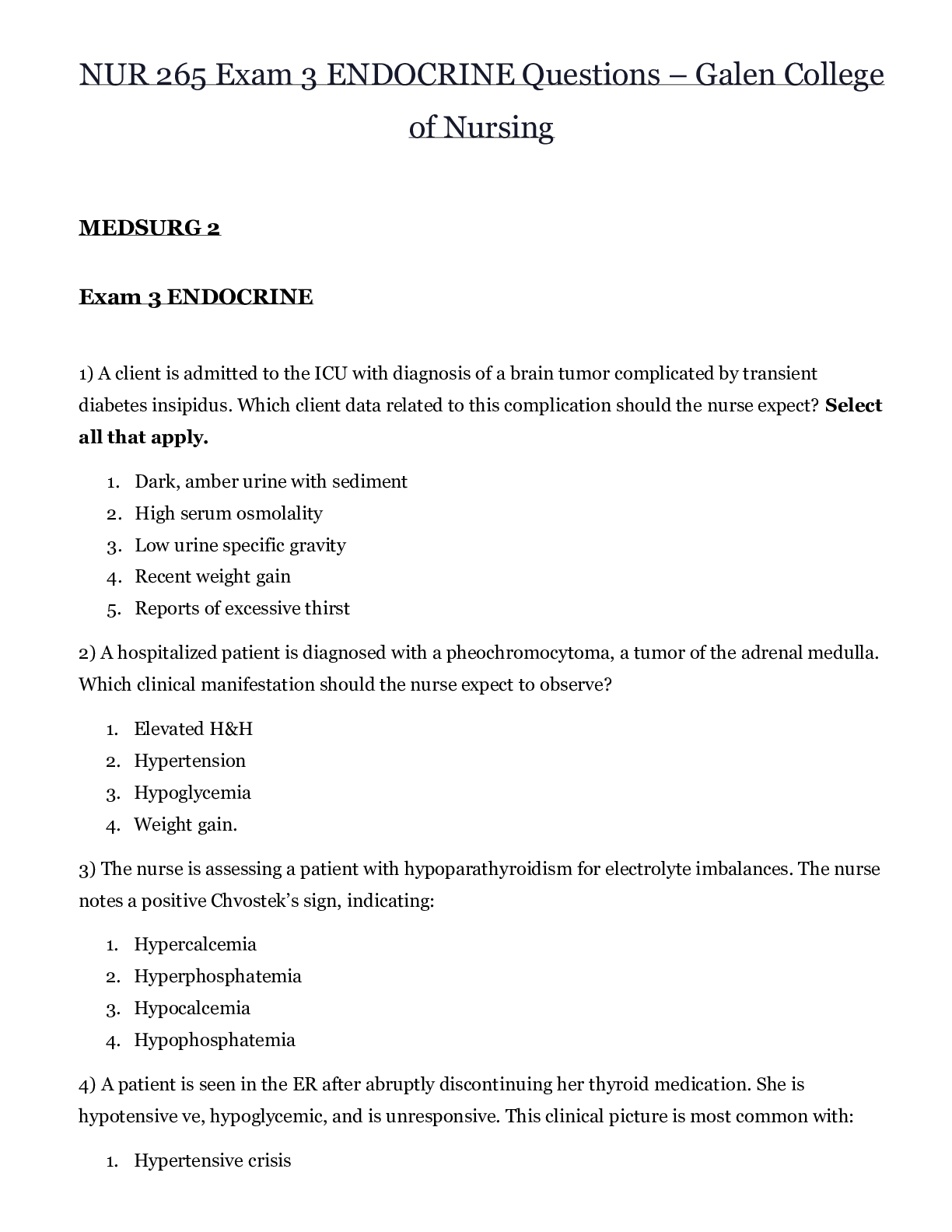
 – CHAMBERLAIN COLLEGE OF NURSING.png)
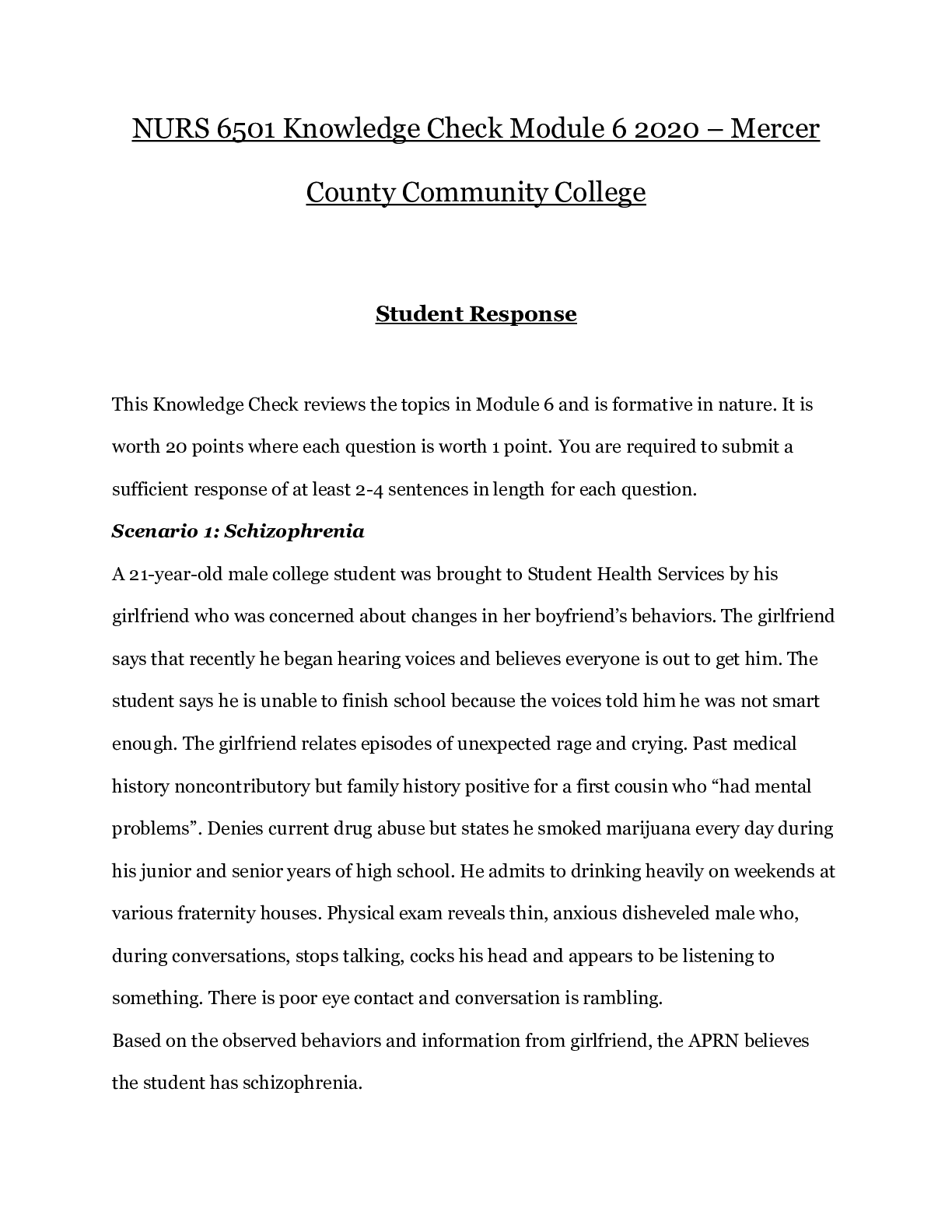

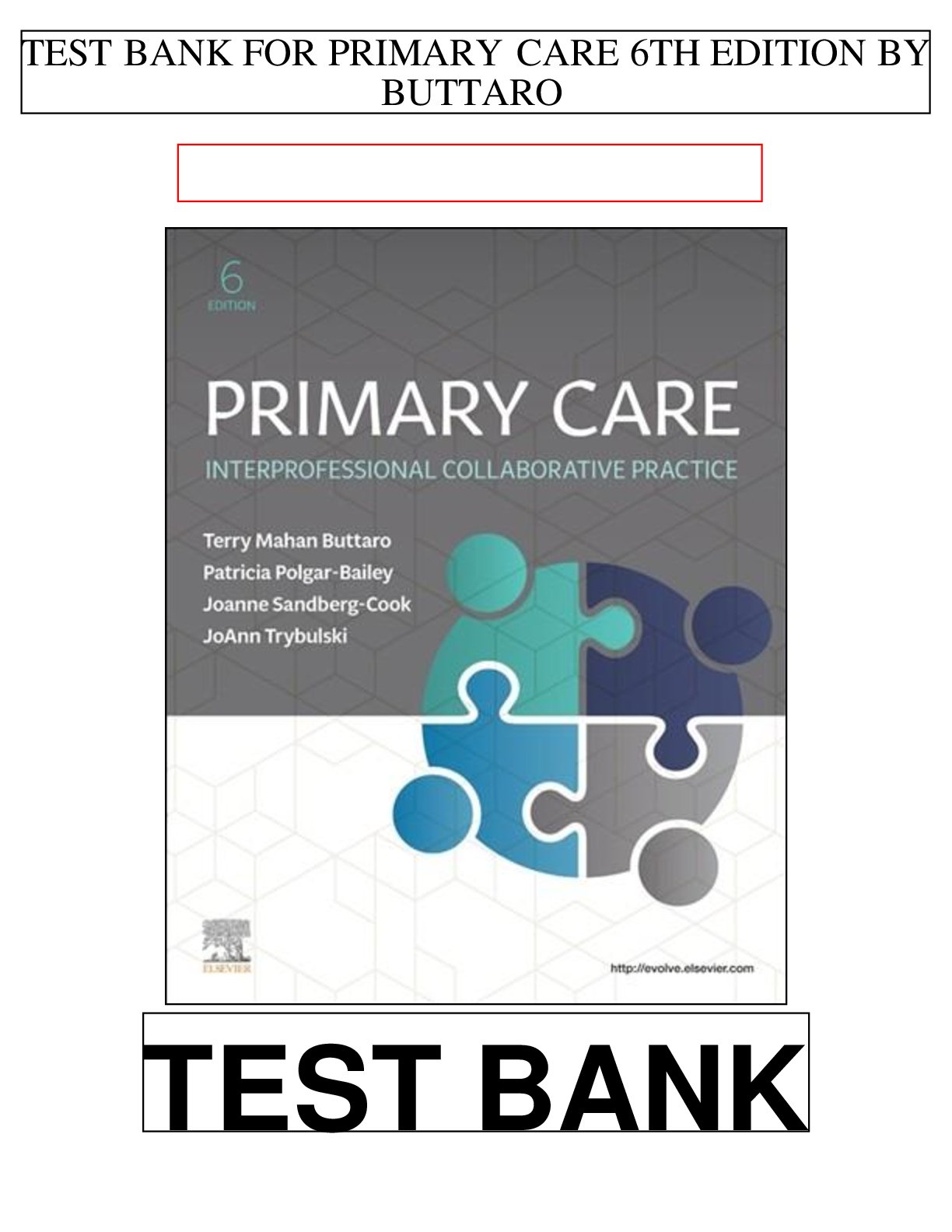
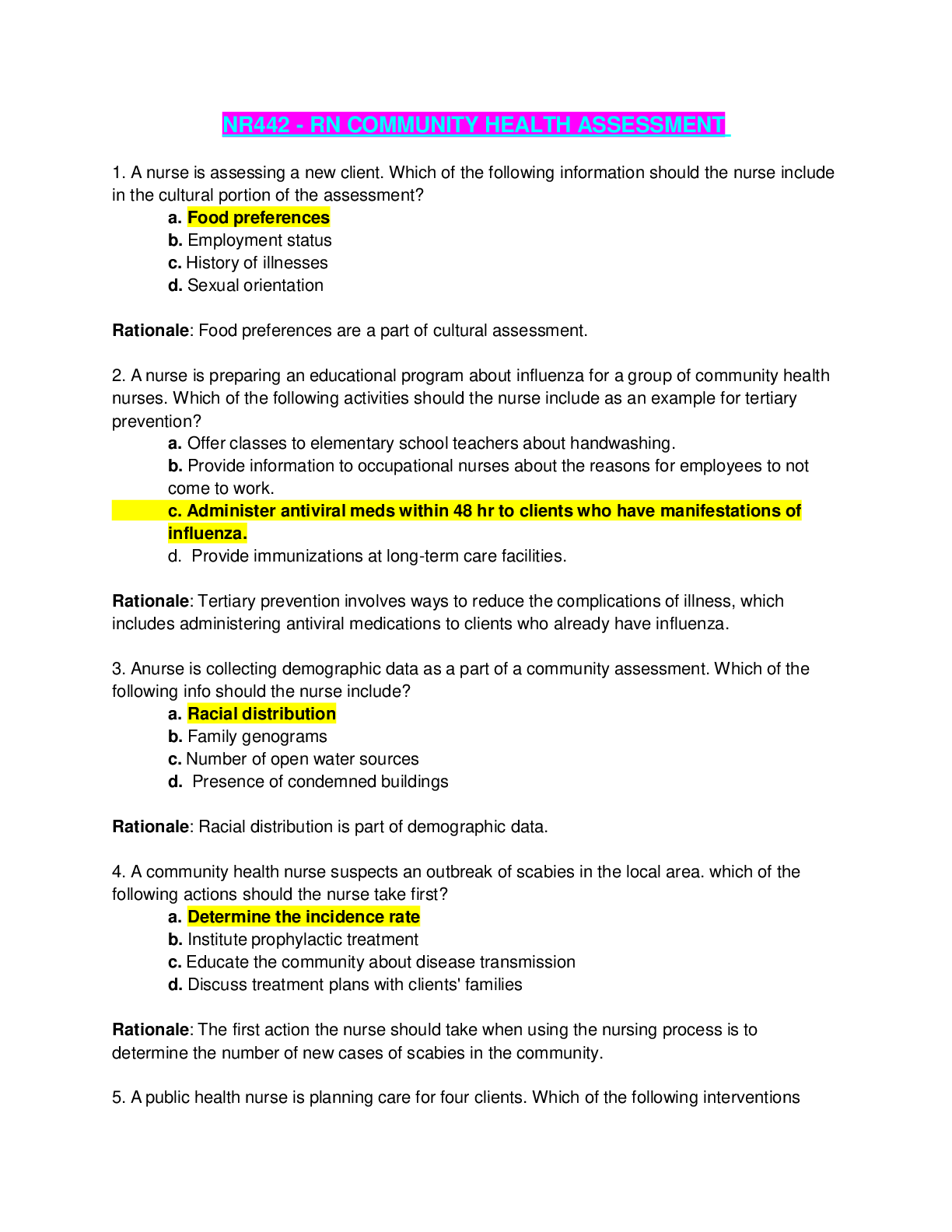
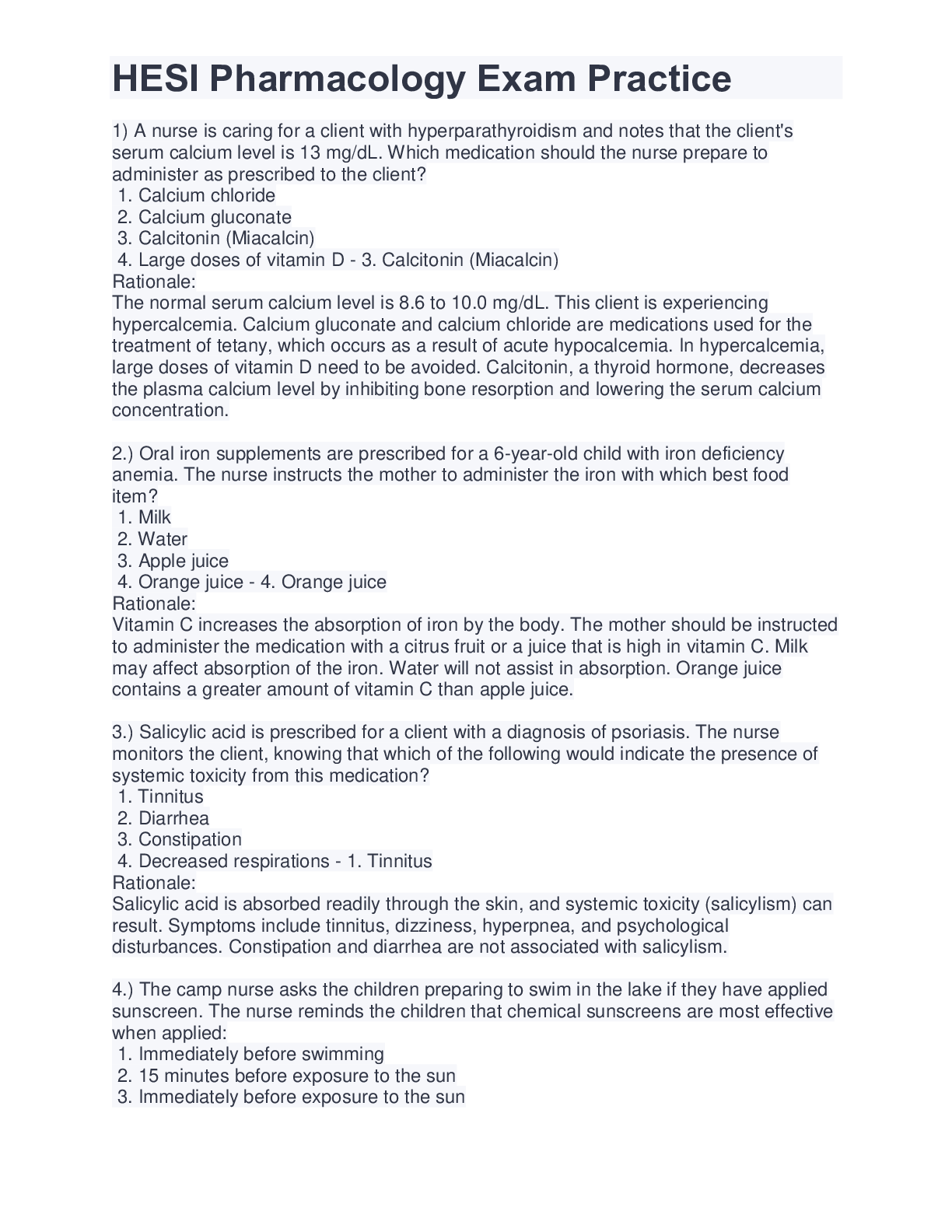

.png)
